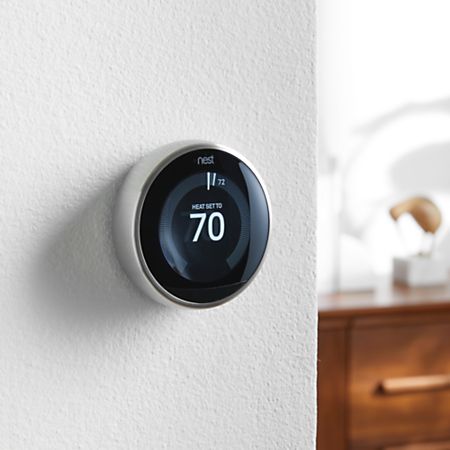Heating, and cooling. These things in our lives are now a necessity, more than a luxury. But, both systems require one common factor: A thermostat.
What is a thermostat?
A thermostat is a computer that detects the current temperature, and then what you want the temperature to be. It then sends a signal to the furnace, boiler, or air conditioner and then “Calls for heat.” This signal activates a relay that turns the air conditioner, furnace, or boiler on. It then begins its cycle, heating or cooling the home to your desired temperature.
Problems with Thermostats
Thermostats can be prone to basic problems, like not calling for heat, even if the temperature has been set. Sometimes the sensor is off and detects an incorrect temperature in the home, or the thermostat can communicate incorrectly with the unit. For example, you call for heat, but the A/C kicks on, or you call for cooling and the furnace turns on. These all can be issues with the thermostat, and how it communicates with the board of your air conditioner, furnace, or boiler.
Different Kinds of Thermostats
Mechanical Thermostats
Mechanical Thermostats are common in older homes, they use a basic dial and small gears, similar to a watch to turn a dial. This then communicates through the thermostat wires to the board of the unit, turning the unit on. These typically can control only one function. For example, they cannot control humidity, that would be a different dial, etc. These can hold up very well if maintained and used properly, although once the hardware begins to deteriorate, issues can become a normality, and replacement is typically advised.
Digital Thermostats
Instead of a dial, or mechanical gears, a digital thermostat has its display through a digital screen. These can have buttons, or touch screens. These are the most common. Digital thermostats can come in two forms. Programmable and Non-Programmable. Programmable thermostats allow you to set a time-table for when the unit turns on, based on the clock. For example, you can have it cooler at night, and warmer right before you wake up. It’s all based on your custom settings. Non-programmable digital thermostats work just like mechanical thermostats, just with a screen. You set the temperature you want, and that’s the temperature it puts out.
Smart Thermostats
Smart Thermostats have become commonplace in our markets. They permit a homeowner to directly communicate with his home through a cell phone. Change the temperature or humidity with just a tap of your finger from across the globe. They allow you to change nearly any setting from anywhere. These systems often also integrate with other parts of your home system. For example, your air conditioner, boiler, or furnace can be set up in the same program as your home security system. This allows you to have a fully consolidated home system, making things easier for the homeowner.
Conclusion
At the end of the day, be sure to choose the one that best suits your needs. There are many options out there for you to choose from. If you are unsure which one would work best for you, It Doesn’t Hurt to Call Expert Services- Plumbing, Heating, Air & Electrical!
